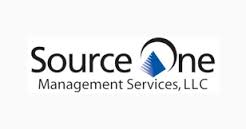
In the wide world of Procurement Transformation we often cite a variety of pain points within organizations -some more prevalent than others. Oftentimes we find that it is an entire pillar (Organization/ People, Process, Tools/ Technology, or Metrics/ Reporting) that is causing the majority of roadblocks within Procurement, and other times it is more isolated. One area that we find causing the most challenges is within the organization structure itself. This is not to say that we always find incapable resources. It may be a blend of capability and capacity, or it may just be that the remaining pillars are so broken that the resources are inevitably unable to fulfill their roles. Ultimately, there are many reasons that the Procurement organization itself can create pain within the business. In my opinion, it all starts with Human Resources.
We often talk about the evolution of Procurement and how the function is beginning to be recognized as a more strategic entity that is critical to the business. In certain industries and businesses this concept is unfortunately still far-fetched. However, even where Procurement has started to make its mark we find that organizations are still looking at the recruitment process from the wrong angle. It seems obvious that if you need people to manage the day-to-day activities within Procurement, you hire Procurement-minded people. The problem with this premise is that those individuals with a Procurement-focused resume are typically going to be tactical resources. While there is a time and a place for resources that can manage the many ebbs and flows of the business, there needs to be a greater focus on hiring business minded Procurement resources.
When we talk about a top performing Procurement organization, it has many “arms”. Those primarily include Transactional (or Tactical), Strategic, and a Center of Excellence. The Transactional function is critical to the operational side of the Procurement organization, managing the buying of goods and services, inventory management, and being a go to resource (or feet on the ground). The Strategic arm of the business is mainly your Category Management function that oversees Supplier Relationship Management, Strategic Sourcing, and Contract Management. They create a partnership with the business and work together to proactively plan and manage at the category level. The Center of Excellence is the reporting arm, they act as the super users of the technology and are a support function to the Category Managers and Buyers.
Many organizations blur the lines between these functions, especially those companies that have grown over time and had to spread responsibilities over a lean team out of necessity. It is difficult to determine at what point a more segmented Procurement organization is needed, but when it is the organization will need to create very clear roles that are defined within one of those arms.
The Transactional arm requires highly organized, process-focused individuals that can manage various task-based activities day-to-day. They need to be able to interface with the business at the plant level and understand their needs. This resource can be considered fairly tactical in nature, but they still need to have negotiation and management skills. While the Strategic arm of the organization is primarily responsible for Strategic Sourcing activities, there should be a threshold for what flows through them versus the plant-based resources.
The Strategic function requires business minded Procurement resources. For these individuals to truly understand how to meet the needs of the business, they need to have a business mindset. Procurement’s role is not to be the decision maker. They are there to support the business so that they can make good decisions. The ideal Category Manager should know enough about the category (ies) they manage to effectively source and manage the market, and to understand how to speak to the business about the category. This role requires resources that have excellent planning and forecasting capabilities, top negotiation skills, and the ability to manage people well.
The Center of Excellence is more technical in nature in that these resources need to understand the Procurement technology in use within the organization well enough to develop and manage the standard operating procedures tied to it. They are responsible for training internal and external resources on the use and best practices within the tool. This function also manages the data going in and out of the tool, and is responsible for creating reports to support the other arms of the Procurement organization as well as the business.
The biggest takeaway with all of the arms of the Procurement organization is that you need to find the right mix of skills to effectively manage within each, with a clear segmentation of roles and responsibilities. When the lines get blurred between roles it is very easy to lose focus on the primary role within that arm of the Procurement function. If Category Managers get brought into plant-level inventory management, they do not have as much bandwidth to focus on category based sourcing, leaving opportunities to impact the bottom line untapped. Likewise when buyers are asked to run large scale sourcing events they lose sight in the management of the PO process which can lead to supply chain disruptions.
About the Author: Jennifer Ulrich is an Associate Director at Source One Management Services, LLC. Procurement Transformation and Strategic Sourcing Expert and Supply & Demand Chain Executive Pro-to-Know, with extensive experience leading large-scale sourcing initiatives in both direct and indirect spend in industries including biotech, medical devices, pharmaceuticals, CPG, and more. Trusted advisor with cross-functional knowledge of Procurement and Supply functions. Develops Transformation Roadmaps as well as provides customized training on Strategic Sourcing, Contracting & Negotiations, Spend Analytics, Category Management, Procurement Process Improvement, and Supplier Relationship Management.
